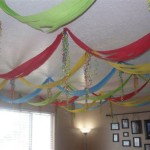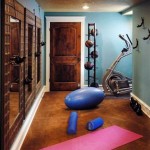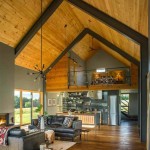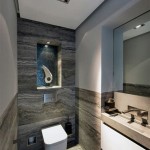Wall Mirror Decorating Ideas: Enhancing Your Interior Spaces
Mirrors have long been recognized as versatile design elements, capable of significantly impacting the aesthetic and functionality of any interior space. Beyond their practical function for personal grooming, mirrors offer a powerful means to manipulate light and expand the perceived size of a room. They can act as striking focal points, add depth, and introduce unique decorative flourishes. The strategic placement and style of wall mirrors allow for opportunities to truly personalize a home. This article explores a variety of wall mirror decorating ideas, offering guidance on how to leverage these elements for optimal impact.
The Power of Strategic Placement
One of the most critical considerations when incorporating wall mirrors is placement. The location of a mirror dramatically influences its effect. Consider the desired outcome before hanging a mirror. For example, to brighten a dimly lit room, position the mirror opposite a window. This allows the mirror to reflect natural light, dispersing it throughout the space and creating a more inviting atmosphere. Similarly, in a small room, a large mirror can visually double the area by mirroring the existing furnishings and creating the illusion of greater depth.
When placing a mirror in an entryway, assess the overall feel you wish to impart. A full-length mirror provides a practical spot for a quick check before leaving the house, while also opening up the space and making it appear more welcoming. In dining rooms, consider placing a mirror to reflect the dining table and the people around it, which can enhance the sense of connection and conviviality. In living rooms, mirrors can be used to reflect artwork, add a dramatic element above a fireplace, or serve as a stylish alternative to traditional artwork on a plain wall. Thoughtful selection of placement ensures the mirror complements and enhances the existing design elements.
Mirror Shapes and Styles: Making a Statement
The selection of mirror shape and style provides a significant opportunity to influence the overall aesthetic. The choices range from classic to contemporary, each offering a unique visual impact. Round mirrors, for instance, introduce a softer, more fluid element, making them ideal for entryways, bedrooms, or any space where a gentle aesthetic is preferred. Consider a round mirror with a decorative frame to serve as a focal point above a console table or within a gallery wall arrangement.
Rectangular and square mirrors provide a sense of order and structure, often complementing symmetrical spaces. They are well-suited for above vanities in bathrooms, or over mantels in living rooms. Consider a single, large rectangular mirror to make a small wall appear larger. For an avant-garde touch, incorporate a group of irregularly shaped or multi-paneled mirrors to form a creative wall installation. The frame is another important factor. Frameless mirrors provide a minimalist, clean look, and often blend seamlessly with existing décor. Framed mirrors, on the other hand, showcase a variety of materials from wood and metal to ornate carvings and geometric patterns, enabling the mirror to truly become a work of art.
Maximizing Light and Space
A fundamental benefit of mirrors is their ability to enhance light and the perception of space. In rooms with limited natural light, the strategic placement of mirrors is crucial. Place mirrors opposite windows. These mirrors then capture and reflect the incoming light, creating a brighter and more open environment. This technique works especially well in hallways or rooms with only a single window. Consider using multiple smaller mirrors, or a mirrored wall, for even more reflective surface area.
For compact spaces, incorporating a large mirror on a prominent wall can instantly create the impression of spaciousness. This is achieved by reflecting the existing décor and expanding the visual boundaries of the room. Avoid overcrowding the reflected space with too many objects, as this can negate the effect. The placement is also key – position the mirror so that it is reflecting a pleasant view, such as a well-designed seating area or a piece of art. Be mindful of what the mirror reflects because a cluttered reflection will detract from its positive impact.
Integrating Mirrors with Existing Décor
Successfully integrating mirrors into an existing design scheme requires careful consideration of colors, styles, and textures. The mirror (or mirrors) should complement the overall theme of the room, rather than clashing with it. For example, a mirror with a rustic wooden frame will complement a farmhouse-style interior, whilst a sleek, metal-framed mirror works well with a modern aesthetic.
Consider the color palette of the room. A mirror frame can either blend in with the existing colors or serve as a contrasting element, depending on the desired effect. For a cohesive look, match the mirror frame to the hardware of other furniture pieces, or to the color of the walls. When selecting a mirror, consider the materials and textures present in the surrounding décor. A mirror with a textured frame, such as one with a woven or distressed finish, can add visual interest and depth to the space. Similarly, a gold or silver framed mirror introduces shine and opulence.
Creating a Gallery Wall with Mirrors
Mirror gallery walls offer a creative way to enhance a space, combining both functionality and artistic expression. The key to a successful wall gallery is careful planning and balance. Start by gathering a variety of mirrors in different shapes, sizes, and frames. Avoid using only identical mirrors, as this tends to create a less dynamic composition. Incorporate a mix of sizes, including small accent mirrors and larger statement pieces.
Before hanging any mirrors, arrange them on the floor to experiment with various layouts. This will help visualize the final display and ensure a pleasing arrangement. Consider incorporating other decorative elements, such as artwork, photographs, or small objects, to add visual interest and break up the uniformity of the mirrors. Experiment with symmetrical or asymmetrical arrangements, depending on the aesthetic you want to create. Consider using a grid layout, with the mirrors evenly spaced and aligned, or a more free-flowing arrangement that is less structured. Symmetry brings a sense of formality, and the less structured approach can result in a more relaxed, eclectic feel.
Maintenance and Practical Considerations
In addition to aesthetic considerations, practicality is also important when decorating with wall mirrors. Consider the accessibility of the mirror for cleaning. Choose a location where the mirror is easy to reach and maintain. Regular cleaning is essential to keep the mirror looking its best. Use a suitable glass cleaner and a soft cloth to remove dust, fingerprints, and smudges.
When installing a mirror, ensure that the wall is structurally sound. Use appropriate mounting hardware, such as screws, anchors, and brackets, to secure the mirror safely. Measure the area carefully before purchasing a mirror. Ensure that the mirror dimensions fit the available space and its impact on the surrounding design. Also consider the weight of the mirror, especially for larger pieces, and select appropriate mounting hardware to support it. Following these considerations ensures a safe and well-integrated addition to the home environment.

Mirror Decoration For Home 15 Ideas To Decorate With Mirrors

How To Decorate With Mirrors Decorating Ideas For

100 Must See Wall Mirror Ideas For Your Home Decor

Mirror Decoration For Home 15 Ideas To Decorate With Mirrors

25 Wall Mirror Decorating Ideas That Will Enhance Your Home Decor

25 Wall Mirror Decorating Ideas That Will Enhance Your Home Decor

10 Ideas For Decorating With Mirrors Stance Studies On The Family Living Room Decor Wall

Wall Mirror Design Ideas For Your Home Cafe

Revamp Your Space 9 Wall Decor Ideas For Trendy And Stunning Homes Hipcouch Complete Interiors Furniture

Wall Mirror Design Ideas For Your Home Cafe
Related Posts







